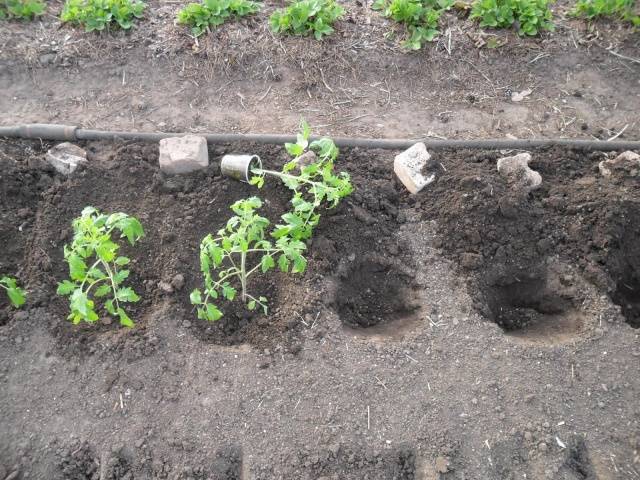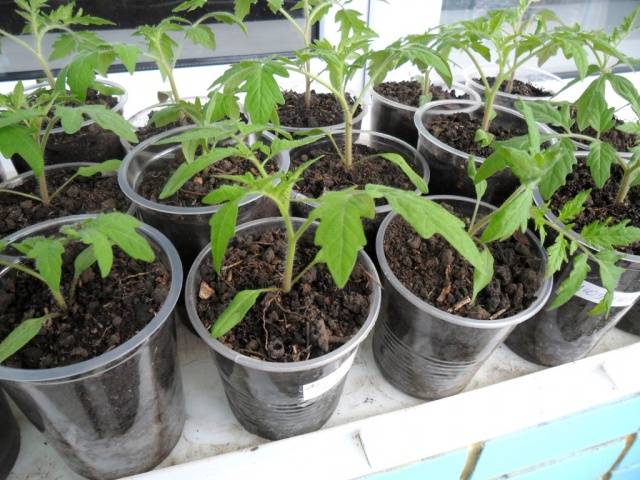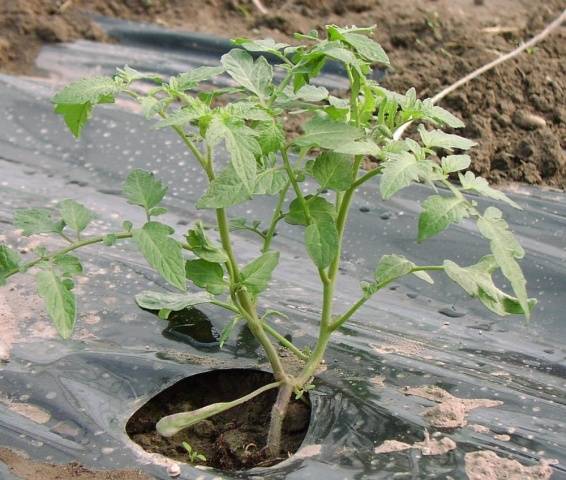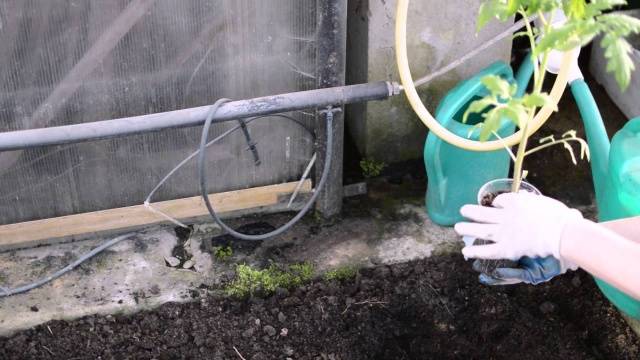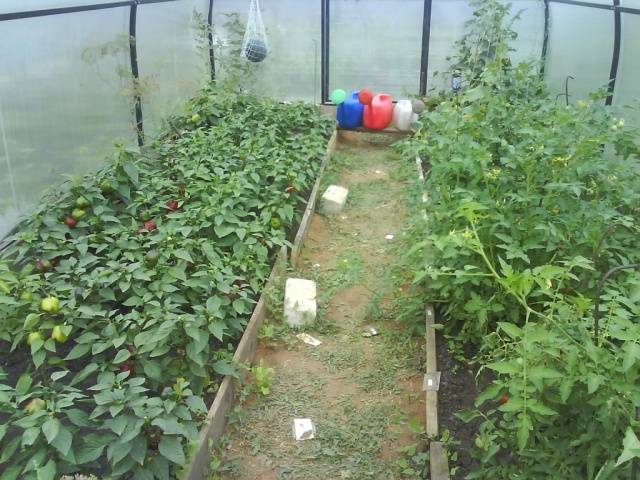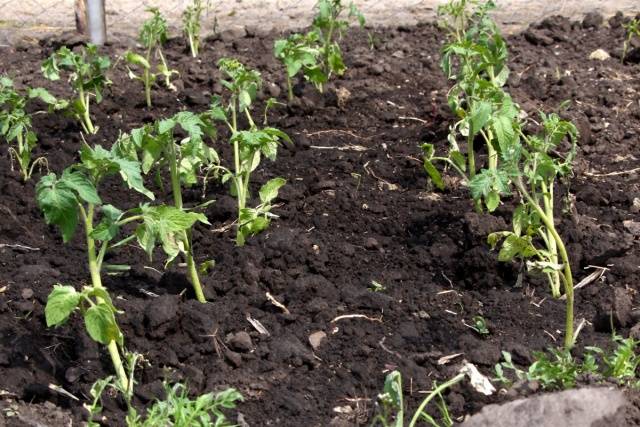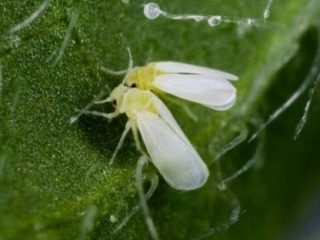Content
Tomatoes, planted on time, take root quickly, without experiencing the stress of changing conditions. But it is not always possible to follow the recommended dates and the seedlings may outgrow. To help tomatoes and get a good harvest, a set of measures must be taken.
Appearance
Ideal appearance of ready-to-plant tomatoes:
- 4 true sheets are formed;
- The stem is dense, with short internodes;
- Leaves are green, resilient;
- The stem color is purple;
- Height up to 20 cm.
If the planting time is delayed, the stem is stretched thinning. The internodes increase, the formation of 3 and 4 pairs of true leaves begins. Bud formation may begin. During transplantation, such tomatoes experience severe stress, which significantly slows down development and delays fruiting.
By their appearance, you can determine how much the seedlings have outgrown. Slightly overgrown tomatoes have a height of up to 30 cm, 4 leaves, the growth falls on the elongated internodes. Such seedlings do not require special measures before transplanting; hardening and good care are enough.
Medium overgrown seedlings up to 45 cm high, 3 pairs of leaves and buds begin to form. Planted in the ground, it is sick for a long time, the first fruits may be the last.
Severely overgrown tomatoes, more than 50 cm in height, have more than 6 leaves, possibly even flowering buds. If a to plant such overgrown tomato seedlings in the ground, it can quickly die.
Hardening
Overgrown seedlings have significantly reduced immunity. To avoid the death of the plant, it is necessary to harden before planting the tomatoes in a permanent place.
To start hardening, it is advisable to choose a cloudy, warm day with high air humidity. In such conditions, tomato seedlings will experience the least stress. Tomatoes begin to be taken out into the open air gradually. For the first time, 2 hours will be enough, every day the time is increased. After a week, you can leave the tomatoes in the open air, covering them from a possible cold snap.
If tomato seedlings are transferred from an apartment to a greenhouse, it is enough to create high humidity for it, an optimal temperature regime and cover it from the sun, gradually opening access to bright light for a longer period. The hardening process takes up to 2 weeks, after which no shading is required. In cloudy weather, seedlings do not need to be shaded.
Planting dates for overgrown seedlings
When determining the timing of planting overgrown tomato seedlings, it is necessary to focus on the soil temperature. When planted in cold soil, seedlings can develop fungal infections. The soil temperature should be at least 15 degrees Celsius. In most Russian regions, open ground warms up to the desired temperature only in May, in more northern regions - in June.
Indoors, the soil temperature is artificially increased. In addition to directly heating the greenhouse, you can use black film and the heat that is released during the decomposition of organic matter.
Greenhouse cultivation
Before planting an overgrown tomato seedlings, you need to prepare the greenhouse. The soil is cleaned of debris, dug up, fertilizers are applied. Manure, even rotted manure, must be introduced carefully. An excess of this fertilizer can harm tomatoes.
The greenhouse is washed from the inside, paying special attention to the joints and corners; insect larvae and fungal spores often hibernate in these places. After washing, it is advisable to spray the walls with insecticides. The top surface of the greenhouse does not need to be washed. The accumulated particles of dust and debris will create a filter from the sun's rays, which can burn the unused leaves of the seedlings. When the tomatoes get used to the new conditions, it usually takes 1 - 2 weeks, the dirt from the outer surface is washed off so that the tomatoes receive more heat and light during the growth process.
To transplant slightly overgrown seedlings, it is necessary to prepare pits in which the root system of tomatoes and a third of the stem will fit freely. As a rule, such seedlings do not require deeper burial. Seedlings are carefully planted in a prepared hole, covered with soil and poured abundantly with warm water.
A hole for tomato seedlings is prepared, focusing on the volume of the roots and the height of half of the stem. Usually a hole 40 cm deep is enough. Seedlings are placed in the hole not vertically, but slightly obliquely. Thanks to the inclined planting, roots begin to form on the stem, which is dug into the ground, which will allow the tomato bush to receive more nutrients and give a better harvest.
In wet soil, the stems can rot. It is difficult to regulate humidity outdoors, but black plastic wrap can help. It is fixed on top of the ground around the stem of the tomato.
The planted tomato seedlings are buried, poured abundantly with water at a temperature of about 20 degrees. It is advisable to shade the tomatoes for a week so that they can more easily get used to the new conditions. Tomatoes cannot be fed for 2 weeks, an exception can be made for potash fertilizers in a chelated form, which can improve plant immunity.
Severely overgrown tomato seedlings should be cut off a week before planting. When pruning, remove the upper part by about a third, the lower leaves. When planting, the stem is planted horizontally, slightly raising the remaining leaves above the ground. In order for root formation to begin, the soil must be constantly wet, to avoid frequent watering, the soil can be mulched.
Typically, tomato yields from the top of the stem will be higher than a bush that has grown from the remainder of the seedling.
Caring for established seedlings consists in timely watering, weeding and protection from insects and diseases.
Landing in open ground
Before planting seedlings in open ground, it is necessary to prepare the ground. For good growth, tomatoes need a loose, well-drained, nutritious soil. To improve the structure, the soil is dug up twice - in autumn and spring. During autumn digging, rotted manure and humus are introduced into the ground. In the spring, the soil is dug up a second time, leveled, and planting holes are made.
The size of the planting pit is usually 20-40 cm in height and the same in width. Complex fertilizers with a long-term effect are added to the pit, and humus is added if necessary.
A good effect is obtained by soaking the roots of seedlings immediately before planting in the Prestige insecticide.It provides protection against the Colorado potato beetle and bear for 2 months, then the substance is removed from the plant. It is not recommended to use this remedy for ultra-early tomatoes.
If the tomato seedlings are very overgrown, you can place them horizontally by tying the top to a support.
Tomatoes are carefully buried, watered abundantly with warm water and shaded. Shading of the planted seedlings is necessary until the root system begins to fully nourish the plant with water. It usually takes no more than a week for the roots to restore all functions.
Further care for tomatoes consists in timely watering and weeding.
Let's summarize
Even under unfavorable conditions, you can get a good harvest of tomatoes, you just need to be attentive to the plants and follow all the growing rules.
